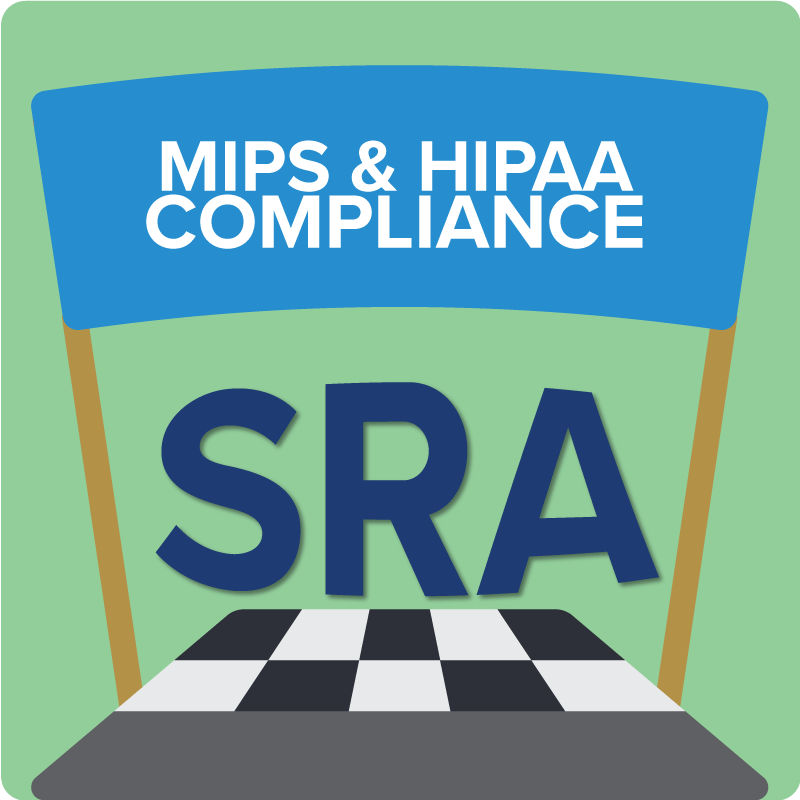
As a healthcare provider, tackling your daily to-do list probably feels like running a marathon without a finish line at times. You’re tasked with managing a successful business, keeping up with ever-changing legislation and new technology all the while having to ensure that your top priority of patient care never falls behind. But despite the challenging course, there’s a benefit to keeping pace with both quantity and quality. And thanks to Value-Based payment programs like MIPS and other government incentives like the HIPAA Safe Harbor Law, providers are rewarded for going the extra mile.
You’ve most likely heard of the Merit-based Incentive Payment System (MIPS) and might even be participating in it already. But whether it’s a Quality Payment Program or new legislation passed into law – the government is continually emphasizing the importance of being proactive rather than reactive and providing incentives for doing so. This is why there’s so much value in knowing what your organization is eligible to participate in (or using government lookup tools like this one if you don’t) and getting yourself on track to ensure that no money is being left on the table. Because many of these different program requirements fall right in line with the standards your practice already has to meet under HIPAA law – protecting your patients, checking off compliance requirements and receiving incentives can often be done all in one stride.
So, what exactly is MIPS?
To take a quick step back, MIPS is one of two payment tracks under the Medicare Quality Payment Program and is a system used by the Centers for Medicare and Medicaid Services (CMS) to measure eligible clinician performance and reward high-value, low-cost care. MIPS participants can receive a payment adjustment to their Medicare reimbursements based on their performance scores across four different categories being:
- Quality. The type of care you deliver based on specific measures of performance.
- Promoting interoperability. Focuses on patient engagement and electronic exchange of information using Electronic Health Record (EHR) technology to improve patient access to their health information and exchange of information between providers.
- Improvement activities. Your participation in clinical activities that work towards improving care coordination and patient engagement and safety.
- Cost. Assesses the cost of care you provide in relation to your Medicare claims.
Now achieving high scores in each of those categories requires some endurance but luckily, your organization can check several quality and interoperability objectives off just by utilizing a compliant and reputable EHR system. But before you can get to these different performance measures, there’s a prerequisite for even participating in the MIPS Promoting Interoperability performance category which also just happens to be a front-runner for achieving HIPAA compliance and taking advantage of other government incentives like the Safe Harbor Law – the Security Risk Analysis (SRA).
The SRA is not only a requirement for MIPS participation but is also the first step in achieving a complete HIPAA compliance program. Conducting an SRA involves assessing any potential risks to your organization’s ePHI and implementing the necessary security updates and safeguards to mitigate whatever vulnerabilities were found. To fulfill MIPS and HIPAA law standards, your organization must complete an SRA annually at minimum and should continually review and update the analysis to address any changes in your technology or practice operations throughout the year.
In addition to being a necessary stride towards implementing a complete HIPAA compliance program and enabling your practice to participate in MIPS reimbursements, the SRA is also key in ensuring your patient’s sensitive health information is best protected. As the healthcare industry continues to emerge as a top target for data breaches – having the proper cybersecurity practices in place are essential. The government recognizes these additional hurdles that providers are faced with, and knows the importance of identifying and mitigating security risks within the organization before an incident occurs. This is exactly where the HIPAA Safe Harbor Law that we keep mentioning comes into play. The legislation passed in January of 2021, basically says that organizations can receive reduced HIPAA fines and penalties if they have the proper security measures in place – step number one being (you guessed it) a properly completed SRA.
But while it’s one thing to know why your organization should be meeting the requirement, it’s another to actually know what to do to get your practice off the starting blocks – and avoid the many misconceptions that might slow you down. Luckily a solution like Abyde makes conducting a thorough and accurate assessment of your organization a breeze. With dynamically generated questions to cover all the necessary safeguards and ongoing compliance assessments to ensure any identified risks are mitigated – you can feel confident that your organization is covered.
Even though throwing in the SRA to your already jam-packed to-do list might seem like adding miles to the track, with Abyde you can score your best time and complete this key requirement in just a few clicks of a mouse and only 20-minutes a month. So while your marathon of responsibilities might go the distance – with the close of 2021 right around the corner, the only way to get your organization across the finish line and meet HIPAA and MIPS requirements is to have a properly completed Security Risk Analysis in place.